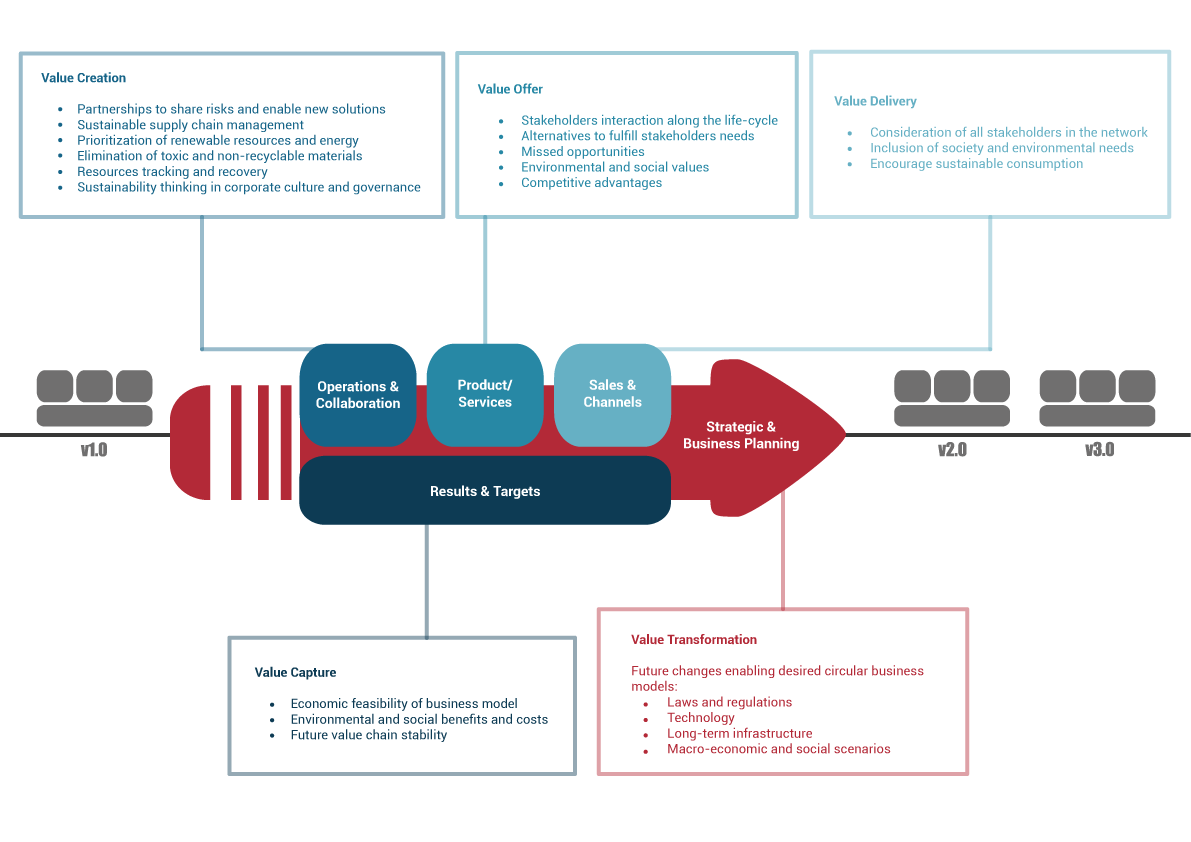Ways to stimulate sustainability and circular thinking when designing your future business models
One of the main challenges businesses face today is related to the understanding of how to sustain future competitiveness and growth and at the same time enhance resource and energy productivity. Cracking that case is not a piece of cake. Good news is that the sooner you start the more chances you will have to test, improve and be ahead of your competitors, based on a Circular Economy mindset.
One good way to start is trying to understand the company’s current situation regarding already implemented circular or sustainable initiatives. Next steps are mapping potential hotspots and opportunities to improve resource and energy productivity, and brainstorming to rethink and imagine new ways of running your business.
The rethinking of your business model should be performed with a systematic approach, searching for synergistic mechanisms to achieve circularity in several areas of your company and also evolving over time. You should look for opportunities in:
- the way value is offered in your business through new combinations of products and services to fulfill your current or future stakeholders’ needs;
- the way value is created, by exploring how to change your operational processes, improve resources sourcing and develop new collaborative partnerships to close your value chain (e.g.: improve sourcing or develop reverse logistic and remanufacturing systems or networks) while generating new sources of income;
- the way value is delivered, by changing the means of interacting and reaching your customers and stakeholders;
- they way value is captured and transformed in business results (social, environmental and economic);
- and finally, the way value is transformed over time, since a good idea not feasible today could be feasible in a couple of years (e.g.: if a specific legislation changes or if a technology becomes feasible for scaling up (i.e.: think about wind mills and electric cars for instance)). You should also be vigilant for the other side of the coin, since what is guaranteed business today, may be obsolete in the future (i.e.: think about the recent revolution in the music and pictures industries with the advent of digitization).
What about your business? Are you already considering sustainability and circularity best practices to stimulate systematic innovation in different areas of your business and for different moments in the future?
Have a look at some guiding topics that may inspire you in rethinking your business model in a more circular and sustainable way:
This article is based on the publication: Pieroni, M., Pigosso, D. and McAloone, T. (2018). Sustainable qualifying criteria for designing circular business models. Procedia CIRP. (Forthcoming).
